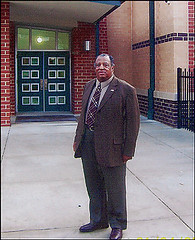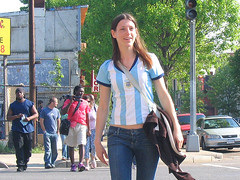A basic lesson in (housing) economics
Frozen Tropics writes:
[Yester]day's Post has this article, "Housing Cost Increases Migrate to Poorer Areas" about how, while housing prices in more established neighborhoods like Cleveland Park or Capitol Hill proper seem to be leveling out, prices in areas with greater poverty (like Ivy City) continue to climb steadily.
In high cost areas, adjacent areas of rough equivalence (location, housing stock, amenities) but lower prices experience increases in demand and therefore price, spurred by the demand of people who can't afford to buy in the higher cost, "nicer" but still close areas, so they accept a secondary choice-location. This is what spurs "neighborhood investment" and what some people call "gentrification." (See this previous blog entry on the topic, "More about Contested Space--"Gentrification".)
However, it is likely that the new entrants in the lower cost area, while having less household income compared to residents in the preferred areas, have more income than present residents in the secondary area, which can contribute to recognition and resentment of "differences." (See gentrification effect #2 in the previously cited blog entry.)
Case #1 Example: the H Street NE neighborhood.
People were first attracted to H Street because the housing stock is roughly identical to that on Capitol Hill, although the houses typically are a bit smaller. Generally, the area isn't as maintained as nicely, and the shopping amenities particularly restaurants are meager, but the area is just as close to Downtown, National Airport, and the Capitol. And if you want a decent meal, just go a few blocks south...
Talk to old-timers. Some say, yeah, when I first moved here, no one moved east of 6th Street, then it was 8th Street, then it was Lincoln Park (11th Street), now that Hill East will be home to a Harris-Teeter, interest is moving all the way over to the Anacostia, etc.
As prices increased in the H Street area, accelerated in part by the groundbreaking and later opening of the New York Avenue Metro station, demand moved northeast into lower Trinidad. It continues northward into upper Trinidad, Ivy City, and eventually eastward past Miner School on the 600 block of 15th Street NE, although that area is still tough...
Remember the same kind of progression with regard to Dupont East, Logan Circle, Shaw, U Street? Now it's Columbia Heights, Petworth, and northward up Georgia Avenue. Etc.
I was on U Street last night at about 8 p.m. and 50% of the people on the street were white. Makes you appreciate people's concern about deep changes in the city.
Although as I have said time and time again, that's the way it's been for more than 120 years. Neighborhoods change. And they keep changing.
See "Renaissance continues along capital's `Black Broadway': Washington D.C.'s U Street corridor -- known as Black Broadway for its history of drawing black artists and cultural institutions -- is undergoing a face lift that is already restoring some of its former glory" from the Miami Herald and today's obituary, "Mayor of U Street' John 'Butch' Snipes, 71" from the Post.
 John "Butch" Snipes. Family photo.
John "Butch" Snipes. Family photo. Flickr photo, Britta on U Street, from housing
Flickr photo, Britta on U Street, from housingIndex Keywords: housing



0 Comments:
Post a Comment
<< Home